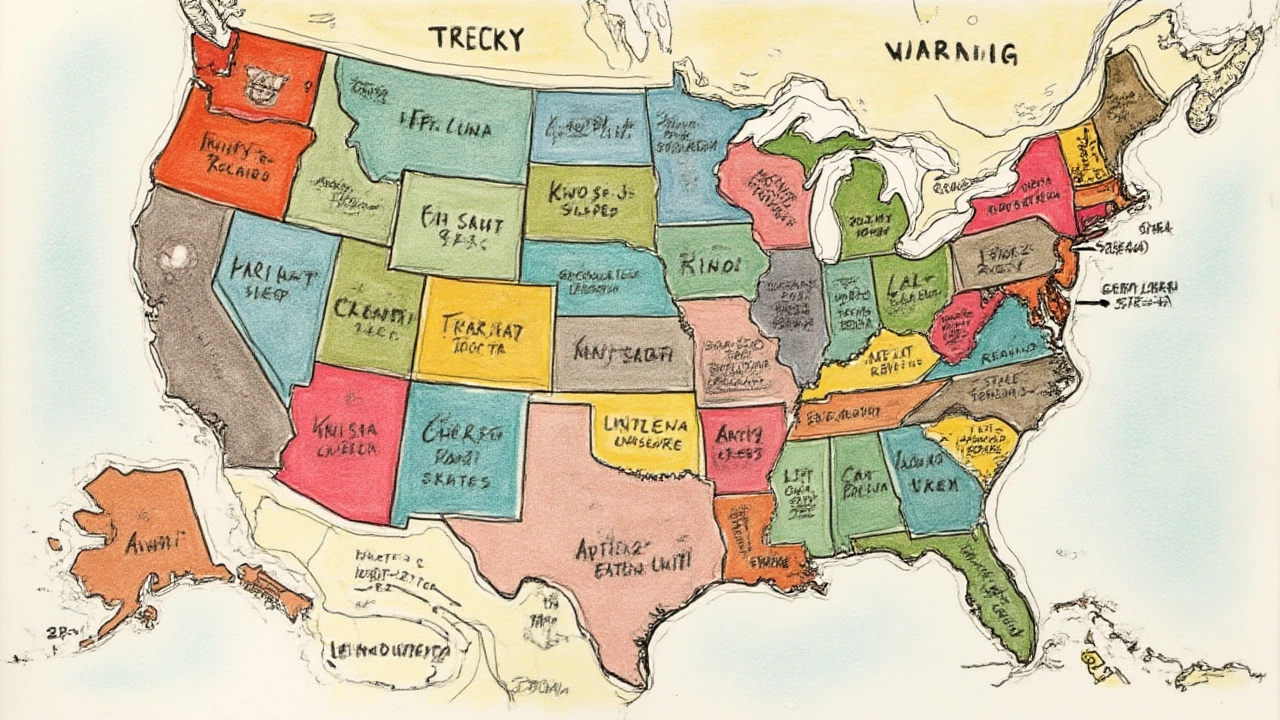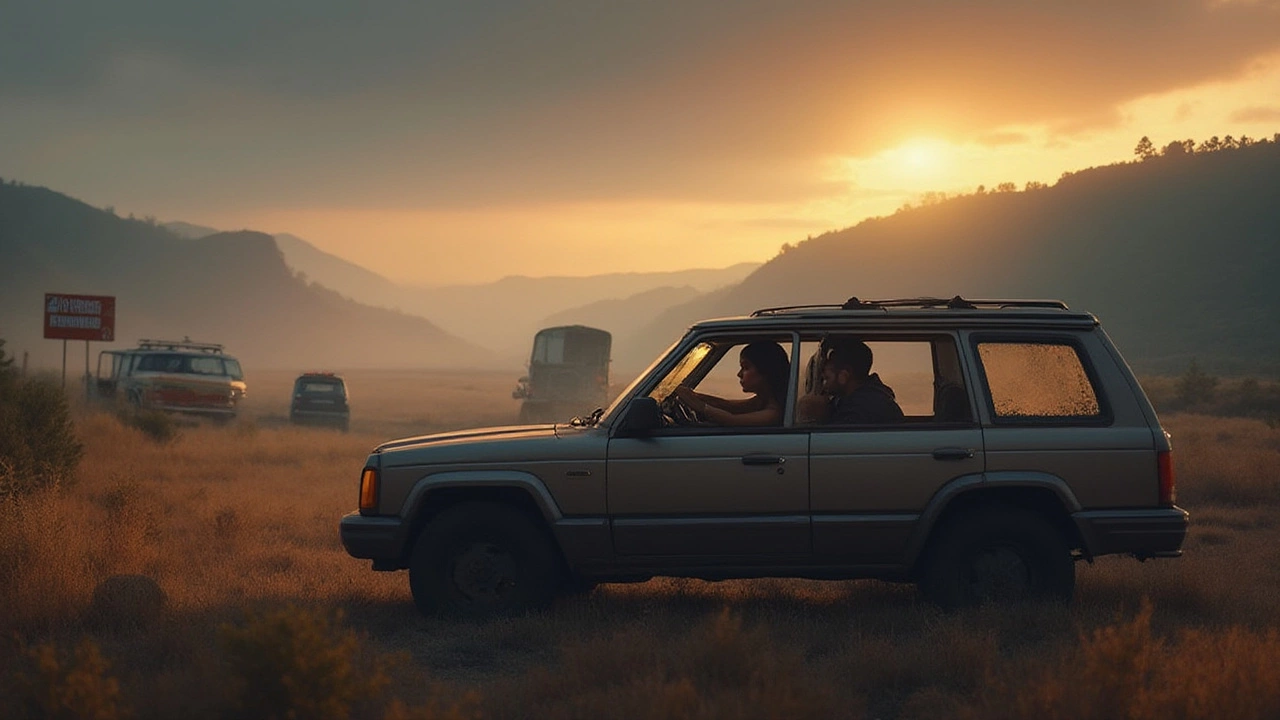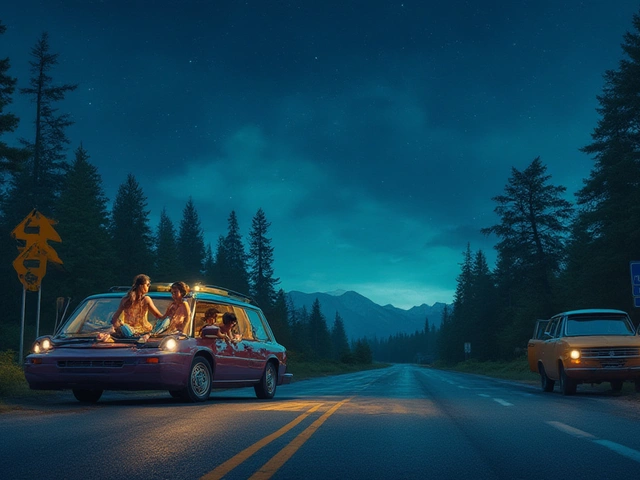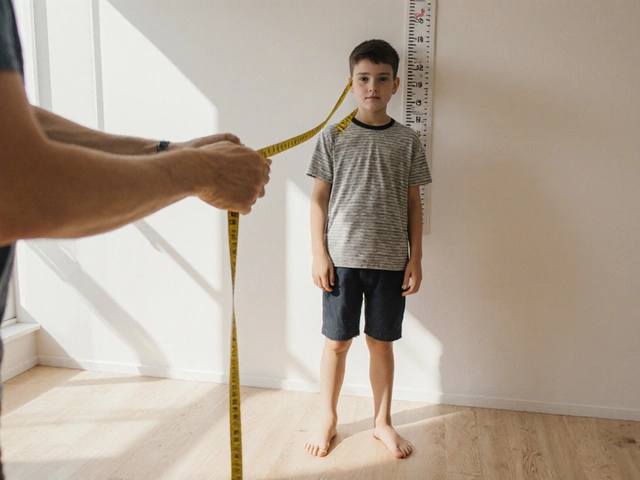If you’ve ever pulled into a rest stop at 2 a.m. with heavy eyes and a crick in your neck, you’re not alone. Car sleeping—whether as a matter of adventure, necessity, or pure exhaustion—has become surprisingly common across the US. But before you flatten the seat and close your eyes, here’s a little shocker: in some states, you’re breaking the law just by dozing in your vehicle. Confused? You’re not the only one, and the patchwork of different rules only adds to the mess.
The Complex Patchwork of Car Sleeping Laws
Sleeping in your car seems harmless on the surface—after all, it’s your car, right? Not always. In the United States, the rules around car sleeping swing wildly from state to state, and even city to city. Some places roll out the welcome mat for tired drivers, even offering 24-hour rest areas. In others, you could face a stern officer, a stiff fine, or even a trespassing charge. It’s not just about stealing a nap; it’s a matter of local law, public safety, and housing policy.
Let’s look at the states that are the most clear-cut about banning car sleeping. South Dakota stands out for making it technically illegal to sleep in your car anywhere except certain approved campgrounds. Tennessee is infamous for anti-camping laws that make it risky to sleep in your car overnight on public property. Florida’s local ordinances are tough: Miami, Key West, and other cities fine people caught snoozing in their vehicles. Then you’ve got Hawaii, which seems ideal for car camping—until you realize overnighting in your car just about anywhere is illegal without a permit.
But it doesn’t stop there. California gets attention because some cities (like Los Angeles and San Francisco) have strict rules against sleeping in vehicles on streets or public property, especially to limit visible homelessness. Oregon and Washington have similar city-by-city restrictions. New York bans vehicle dwelling in key locations, like NYC or near parks. Alabama and a few others have state-wide bans at rest areas, with posted signs warning of hefty fines.
For something as basic as shutting your eyes in your own car, laws can get tangled real fast. Here’s a sample of specific state policies, shown as a quick reference in the table below:
| State | Statewide Ban? | Major Exceptions |
|---|---|---|
| South Dakota | Yes | Campgrounds with permit |
| Tennessee | Mostly | Private property with permission |
| Florida | No, but many local bans | Rest stops (some allow up to 3 hrs) |
| Hawaii | Yes | Permitted campgrounds only |
| California | No state ban | Varies by city |
| Texas | No state ban | Rest stops up to 24 hours |
So, it’s complicated. Even within the same state, you can drive from a city where car sleeping is fine to one where it’s an expensive mistake. The root of these restrictions often connects to communities trying to address homelessness or discourage people “living” in cars on city streets.
Why Do States and Cities Ban Sleeping in Your Car?
It sounds harsh, but there’s usually more behind these bans than just wanting to bother tired drivers or road trippers. For starters, safety plays a role. In high-crime areas or busy city centers, local leaders have argued that sleeping in cars makes people more vulnerable to theft, assault, or worse. Another big reason: image. Nobody wants their business district parking lots filled with overnight sleepers. Cities banking on tourism or high property values often crack down on visible vehicle dwelling to keep things “tidy.”
But those aren’t the only motivations. The rise in vehicle dwelling—where a person uses a car as a primary home—has fueled concern in many cities. Lawmakers say these bans target long-term vehicle campers, not just travelers making a pit stop. Local businesses have also lobbied against vehicle dwellers parked in the same spot day after day, worried about trash, bathrooms, and safety.
Of course, the enforcement side is all over the place. Some code officers hand out tickets like candy, while others just ask folks to move along. In fact, a recent study by the National Law Center on Homelessness & Poverty found more than 78 cities passed laws restricting sleeping in vehicles between 2011 and 2024, often under pressure from neighborhoods and business districts.
But, sometimes, these rules hit travelers and regular people caught in a tight spot. Even as car sleeping bans are debated in courtrooms for violating people’s rights, new ones pop up almost every year. As the quote from the National Law Center on Homelessness & Poverty puts it:
“Sleeping in a vehicle is not a crime—it’s a response to a crisis, and criminalizing it makes that crisis worse.”
This is why many advocates push for better signage, clearer exceptions at rest stops, and more lenient rules for truly tired drivers. But as it stands, confusion reigns—and those behind the wheel have to pay close attention wherever they park for the night.

Where Car Sleeping Is Actually Allowed
Let’s put a positive spin on things for a minute. While many states have no-nonsense bans, plenty welcome tired drivers or at least look the other way if you’re not causing trouble. For example, Texas lets people sleep in their cars at rest stops for up to 24 hours. Utah’s rest stops? Fine for overnight sleeping, often with clear posted rules. Colorado and Nebraska are friendly to weary travelers, too. Out west, you’ll find public lands run by the Bureau of Land Management (BLM) where car camping is not only allowed but practically a rite of passage—with the usual expectation you keep it clean and quiet.
Even in stricter states, you’ll usually be okay at most interstate rest stops—provided you don’t overstay the typical 8-hour limit. Truck stops (like Pilot Flying J or Love’s) are another favorite, letting anyone catch some shut-eye as long as you don’t block trucks and maybe buy a snack. Walmart, for years, fostered the van-life culture with its “RVers Welcome” attitude in the parking lot, though these days you’ll want to check with the store manager first—about half the stores have banned overnight stays, usually due to city ordinances.
Here’s the thing: even where car sleeping is allowed, you’ve got to be smart. Don’t run your engine for hours (fumes and noise are a no-go). Keep your footprint small. Curtains or sunshades improve privacy and reduce attention. Park near other vehicles, not isolated corners—and don’t set up a full-blown camp in the lot. Quick sleep, back on the road. Easy.
If you’re traveling the US this year, keep these options handy:
- Interstate Rest Stops (check sign for max hours)
- BLM or Forest Service Lands (with posted camping rules)
- Truck Stops/Travel Plazas
- Walmart or Cabela’s—if policy allows, always ask inside first
- 24-Hour Gyms, some allow naps for members in parking lots
- Hospital parking lots—discreet and respectful only
Moral of the story: research before you go. A quick search of “car sleeping laws + [state/city name]” can save plenty of grief, or try sites like FreeCampsites.net for up-to-date legal advice from fellow travelers.
The Risks of Ignoring State and Local Laws
So what happens if you break the rules and get caught sleeping in your car where it’s not allowed? Usually, you’ll get a visit from law enforcement. If you’re lucky, it’s just a verbal warning—“move along.” Many folks report police are understanding if you’re polite, sober, and explain you’re too tired to drive. Sometimes, though, you’ll find a ticket on the windshield, and the fine can be anywhere from $25 to more than $500, especially in big cities or tourist zones.
Trespassing charges are the big one to watch for. Park on someone’s private property or a business lot with posted “no overnight parking” signs, and you could get cited. In rare cases, local ordinances let cops tow your car, especially after repeated offenses. That’s a headache nobody needs.
An added twist: DUI laws. Even if you’re not drunk or using drugs, some states can charge you with “intent to drive” just for being behind the wheel and sleeping. It's unlikely if your keys are stored away and you clearly aren’t driving, but it’s a grey area legal experts warn about—especially in states like Florida and California.
Insurance can get murky as well. If something happens while you’re “dwelling” in your vehicle, your insurer may question whether your policy covers theft or damage. Some companies frown on regular car sleeping, especially if you’re living in it, not just resting on a road trip.
All these headaches often come from a simple lack of info. Always check parking lot signs, stay aware of local news (rules change fast), and don’t be afraid to call ahead if you’re unsure. It’s a small price to pay for legal, safe rest.

Smart Tips for Legal Car Sleeping in Any State
Worried you’ll find yourself too tired to drive with nowhere safe to park? It happens to the best of us, but with a little planning, you can sleep soundly and legally almost anywhere.
- Scout ahead: Use apps like iOverlander or AllStays to find friendly rest stops, legal campgrounds, and parking lots with overnight permission.
- Ask before you sleep: In businesses, always check with the manager. A polite request goes a long way.
- Stay stealthy and tidy: No messes, no loud music, no flashlights glaring all night. Park among other cars, not alone in the far corner.
- Respect signs: “No overnight parking” means just that.
- Keep essentials handy: Eye mask, ear plugs, water—make sure the windows are cracked for fresh air but not wide open.
- Know your sleeping position: In the front seat, lay the seat back and put the keys in the glovebox or backseat to avoid “intent to drive” misunderstandings.
- Check local rules, even if tired: Don’t risk it on state lines; a five-minute search can spare a costly ticket.
If you’re caught somewhere tricky—a city with tight parking rules—call it a night at a 24-hour fast-food spot or gym, then hit the road early. Safety first, always.
The car sleeping maze in the US is frustrating, sometimes downright unfriendly, but not impossible to navigate. Stay savvy, stay respectful, and keep your adventure or road trip on the right side of the law.






